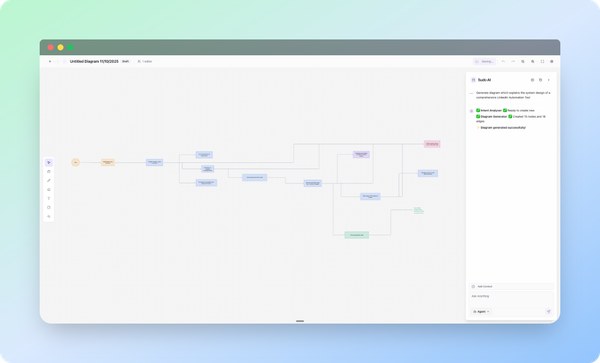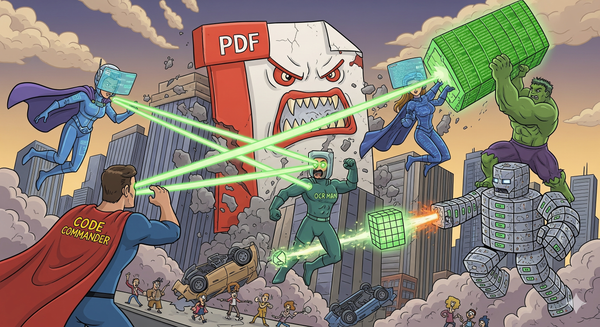Sudosu’s AI Agents: Reimagining How Product Managers Plan Roadmaps, Plans and Marketing Funnels

Product managers working in fast‑growing tech hubs like Bengaluru, India know how quickly ideas need to move from concept to execution. Traditional whiteboards and diagram tools like Miro and Excalidraw help teams visualize their thoughts, but they still rely on human effort for planning and reasoning. Sudosu is a new AI‑powered whiteboard that aims to be more than a canvas – it acts as a thinking partner, enabling product managers to build roadmaps, user journeys and marketing funnels with the help of autonomous AI agents. This blog explores how Sudosu’s multi‑agent system works, why it matters for product managers, and how it compares to popular tools such as Miro and Excalidraw.
The problem with traditional whiteboards for product planning
Visual collaboration tools have barely evolved in the last decade. According to Sudosu’s founders, even when AI started appearing in these tools it came as small helpers like generating sticky notes or suggesting icons[1]. Tools such as Miro and Excalidraw give shape to thoughts but don’t reason, and users are left moving boxes, aligning edges and manually redrawing flows[2]. Product managers often end up using ChatGPT in a separate window to generate ideas and then replicate them on the canvas, slowing down ideation[3].
Beyond friction, the limitations of static tools show up clearly when planning roadmaps or marketing funnels:
- Blank‑canvas anxiety: designers and PMs must start from scratch with shapes and lines[4].
- Manual layout corrections: messy diagrams with overlapping nodes and tangled edges require tedious adjustments[5].
- Lack of context: AI chat tools are detached from the canvas, so suggestions don’t take the actual diagram into account[6].
- No memory: separate diagrams and conversations aren’t linked, making it hard to revisit decisions or evolve the same idea over time[7].
These pain points reveal the need for a thinking whiteboard – one that understands what you are building and helps you plan, not just draw.
AI agents vs. AI tools: autonomy matters
In June 2025, Product School explained the difference between AI tools and AI agents. AI tools behave like smart assistants that require continuous human prompting; they execute narrow tasks and respond to one instruction at a time[8]. By contrast, AI agents can reason, plan and take multiple steps toward a goal with minimal human input[9]. They make decisions on the fly, adapt as they gather information, and string actions together[10]. This agentic approach is particularly powerful for complex product management tasks such as competitive analysis, roadmap planning and prioritization, where a single prompt may involve many interconnected decisions.
Sudosu’s multi‑agent whiteboard: a thinking partner for PMs
Sudosu aims to close the gap between language and visualization by embedding a multi‑agent AI system directly into the canvas. When you issue a prompt like “design a user onboarding flow with login, verification and dashboard,” Sudosu’s agents generate a clean, directional diagram complete with nodes and labels[11]. Unlike typical AI features that act as side panels, the AI is integrated into the board and “reads” your diagram, allowing it to provide context‑aware suggestions[6]. Key capabilities include:
- Start with a thought, not a shape: type your intent and let Sudosu draft a structured flow. You can refine the diagram via natural language commands (e.g., “add error handling for failed login”) and watch it update in seconds[12].
- Copilot with context: the AI analyzes the actual nodes and edges on your canvas and answers questions such as “How can I make this flow simpler?”[13].
- Intelligent layouts: Sudosu automatically optimizes node placement and edge routing to maintain consistent spacing and avoid overlaps[5].
- Conversation‑linked diagrams: each board has an AI chat history tied to it, so you can revisit prior discussions and refine your design over time[7].
- Multi‑agent architecture: behind the scenes, six specialized agents—Query Analyzer, Context Analyzer, Planner, Tool Selector, Diagram Generator and Validator—work together to interpret the prompt, plan the structure, generate the diagram and verify its accuracy[14].
Planning product roadmaps with Sudosu
Planning a product roadmap involves integrating feedback, usage analytics, market trends and business goals. AI-driven roadmap tools aim to surface hidden opportunities and help teams cut through the noise[15]. Productboard notes that traditional scoring frameworks often rely on human estimates and can’t easily adapt as new data arrives[16]. AI enhances prioritization through data integration, merging customer feedback, analytics and market intelligence[17]; pattern recognition, surfacing frequently requested features or correlations[18]; and predictive analytics, forecasting which features will have the greatest impact[19].
Sudosu leverages these ideas in a visual way. You might start a roadmap by typing “generate a Q1 roadmap for our mobile app including authentication, offline mode and referral program.” The Planner agent sequences the initiatives logically; the Diagram Generator draws each initiative as a node on a timeline; and the Context Analyzer considers dependencies or user feedback you’ve already captured in previous diagrams. Because the whiteboard retains conversation history, you can ask, “Which feature should we prioritize based on customer feedback?” and the copilot will highlight the relevant node. This combination of data‑driven reasoning and visual clarity helps product managers in Bengaluru’s fast‑paced start‑up scene build roadmaps that align to customer needs and business objectives.
Designing marketing funnels and user journeys
A marketing funnel maps the stages of customer engagement, from awareness through conversion and retention. AI is increasingly used to generate content, optimize ad campaigns and predict customer behavior. An October 2025 article on Robotics & Automation News highlights several benefits:
- Content generation and curation: AI tools can draft SEO articles and product descriptions, saving time and ensuring consistent tone[20]. Curation engines recommend articles or videos tailored to a specific audience and funnel stage[21].
- Optimized ad campaigns: sophisticated algorithms enable real‑time bidding, dynamic creative, and adaptive budgeting that focuses spend on high‑impact segments[22].
- Predictive analytics: AI models forecast customer churn, purchase intent and lifetime value, uncovering patterns that manual analysis might miss[23].
- Task automation: AI platforms handle scheduling, lead scoring and reporting, freeing marketers to focus on strategy[24].
Sudosu helps marketing teams translate these insights into visual funnels. For example, you can ask the AI to “create a funnel for our SaaS product from awareness to upgrade, with conversion rates at each stage.” The system automatically drafts a funnel diagram with stages like awareness, signup, activation and expansion. You can then annotate nodes with metrics or attach real‑time analytics dashboards via integrations. Because Sudosu understands context, you might ask, “Where are users dropping off?” and the copilot can highlight the stage associated with the highest churn. This makes it easier to iteratively refine campaigns and collaborate across product and marketing teams.
Competitor comparison: Sudosu vs. Miro vs. Excalidraw
Popular tools like Miro and Excalidraw have added AI features, but they differ in depth and integration. The table below summarizes key differences.
While Miro’s AI and Excalidraw’s generative features are valuable, they function more as assistants. Sudosu’s AI acts as a co‑creator, planning and structuring diagrams autonomously and linking them with conversations. This makes it especially powerful for product managers who need to think aloud and iterate quickly.
Geo‑rich benefits for Bengaluru and global teams
Bengaluru has become India’s Silicon Valley, with thousands of product and engineering teams working across time zones. Sudosu addresses common challenges faced by these teams:
- Real‑time collaboration: Sudosu supports live editing and invites teammates to brainstorm together[31], essential for distributed teams in Bengaluru collaborating with colleagues in New York or London.
- Local and global templates: upcoming features include pre‑built templates for flowcharts, user journeys and architecture diagrams[32], enabling teams to standardize processes across regions.
- Integrations: Sudosu plans to integrate with tools like Notion, GitHub and Figma[32]. This helps Indian start‑ups streamline their workflows without switching contexts.
- Cost‑effective pricing: Sudosu offers a free tier for individuals and a Plus plan for around $6 per month[33], making it accessible to early‑stage teams in India.
Building the future of product planning
The shift from static diagrams to intelligent agentic workflows mirrors the evolution from simple text editors to code copilots. Product managers who adopt AI‑powered whiteboards will gain a strategic advantage: they can brainstorm, evaluate alternatives, and build roadmaps faster and more accurately. By embedding reasoning directly into the canvas, Sudosu blurs the line between ideation and execution.
If you’re ready to experience this new way of thinking, try Sudosu for free. Whether you’re building a product roadmap, mapping a user journey or designing a marketing funnel, Sudosu’s AI agents will help you go from idea to structure in seconds. Learn more and sign up at trysudosu.com or www.trysudosu.com, and see how a whiteboard with a mind can transform your product planning workflow.
<!-- The blog above is designed for search engine optimization (SEO) with keywords like AI whiteboard, product roadmap planning, marketing funnel design, multi‑agent AI, and Bengaluru product managers. It includes geo‑rich context for India’s tech community and uses backlink anchors to Sudosu’s website and competitor sites. -->
[1] [2] [3] [4] [5] [6] [7] [11] [12] [13] [14] [28] [31] [32] Sudosu: The AI-Powered Whiteboard That Thinks With You
https://blogs.trysudosu.com/sudosu-the-ai-powered-whiteboard-that-thinks-with-you/
[8] [9] [10] AI Agents for Product Managers: Tools That Work for You
https://productschool.com/blog/artificial-intelligence/ai-agents-product-managers
[15] [16] [17] [18] [19] Using AI for Product Roadmap Prioritization | Productboard
https://www.productboard.com/blog/using-ai-for-product-roadmap-prioritization/
[20] [21] [22] [23] [24] Top Benefits of AI in Marketing You Should Know About
[25] [26] [29] [30] Miro AI - Miro | The Innovation Workspace
[27] Excalidraw+ Changelog – Latest Updates & New Features
https://plus.excalidraw.com/changelog/2
[33] Sudosu - Build Diagrams That Evolve with AI Agents



